This image of a mysterious person emerging from the ocean looks like a shot from a James Bond movie. But as journalist Andrew Blum explains in today’s fascinating talk from TEDGlobal 2012, the photo actually reveals how the World Wide Web can stretch across continents—through a series of cables running for thousands of miles under oceans.
Yes, the Internet is a mysterious virtual thing that magically seems to appear on our computer screens and smartphones, but it requires a physical infrastructure. Blum admits that he, like most people, never gave much thought to how the internet works until, one day, his connection pooped out.
“The cable guy came to fix it, and he started with some dusty cables behind the couch, which he followed out of the building to the basement to the backyard, where there was a jumble of wires along the back wall,” Blum recalls in his talk. “Then he saw a squirrel. ‘There’s your problem,’ he said. ‘A squirrel is chewing on your internet.’”
The revelation was shocking.
“The Internet is a transcendent idea,” Blum says. “It was unequivocally not something a squirrel could chew on.”
That chewed cable was an “a-ha” moment for Blum, and kicked off two years of reporting for his book, Tubes: A Journey to the Center of the Internet.
As Blum tells the TED Blog: “This book is an ode to physical world. It’s about real places.” What he discovered as he dug deeper was: “You can’t learn about the Internet by going to the Internet, to Wikipedia. I ended up doing first-order reporting: going out to the world, seeing things and reporting back. I’m physically in the room with this stuff.”
“Ironically,” he tells us, “the days I was visiting the Internet, I was usually offline. I was with people. ”
To learn more about what Blum learned in his research, watch his illuminating talk after the jump. Below — a series of photos that show exactly how a continent gets “plugged in” via undersea cables.
[ted id=1576]
To understand how new areas get connected to the internet, Blum spoke to Simon Cooper, formerly of Tata Communications, which has laid cables underneath both the Atlantic and Pacific Oceans.
“If the computational technology is incredibly complicated, the basic physical process is shockingly simple,” Blum says in his talk. “Light goes in on one end of the ocean and comes out on the other. It comes from a building called a landing station, often tucked away inconspicuously in a little seaside neighborhood. There are amplifiers that sit on the ocean floor that look like bluefin tuna and, every 50 miles, they amplify the signal.”
Cooper invited Blum to watch a cable be drawn ashore south of Lisbon, Portugal, for WACS — the West African Cable System — which stretches from the United Kingdom through Portugal to the Canary Islands, Côte d’Ivoire, Nigeria, Cameroon and many other countries. The only prompting Cooper gave Blum about arriving on the beach in Portugal was that “a little after 9 o’clock, this guy will walk out of the water.” And indeed he did.
Below, Blum’s photos and captions explaining the process.
The initial link between land and sea is made by a diver carrying a lightweight messenger line out of the surf.
That line then connects to a specialized cable-laying ship. The fiber-optic cable is pulled ashore, floated on buoys until it’s in position, and then dropped onto the sea bed.
A diver then swims out into the water with a machete, cutting the buoys free of the cable.
Engineers then connect the cable to another cable waiting onshore — but only after hacking away at the steel shielding to reveal the hairs-breadth fibers inside.
The precise point of connection is known as “the beach manhole,” a small underground vault where the undersea cable is tied to terra firma.
Working at low tide, construction workers attach a heavy protective sleeve onto the exposed parts of the cable.
A digger then covers it up. And, by the end of the week, the cable to Africa was forgotten under the sand.
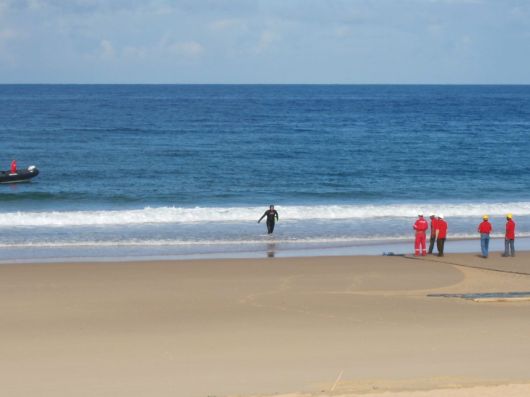
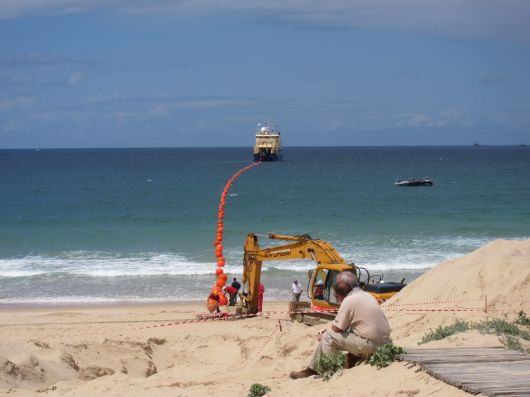
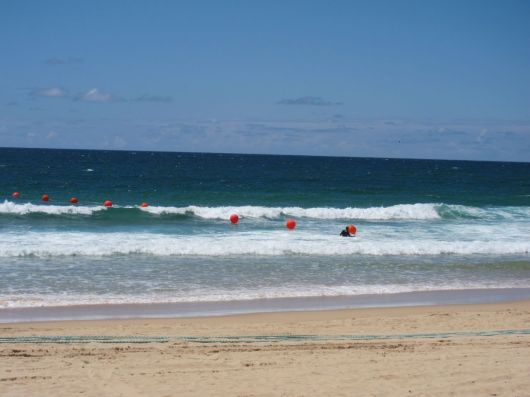
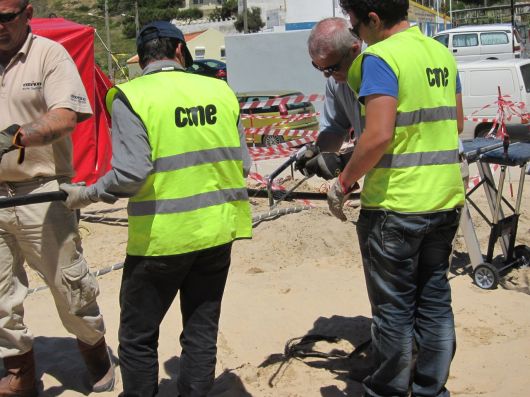
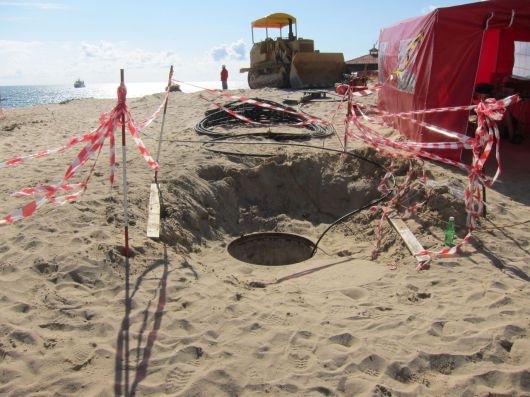
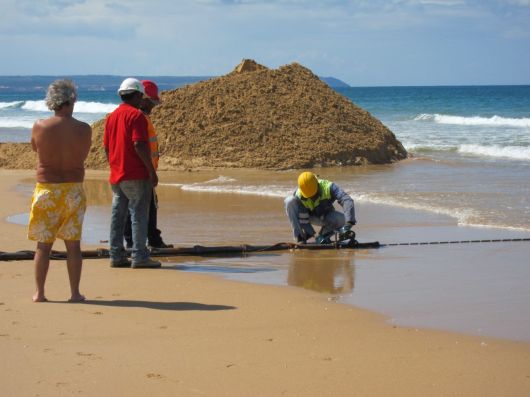
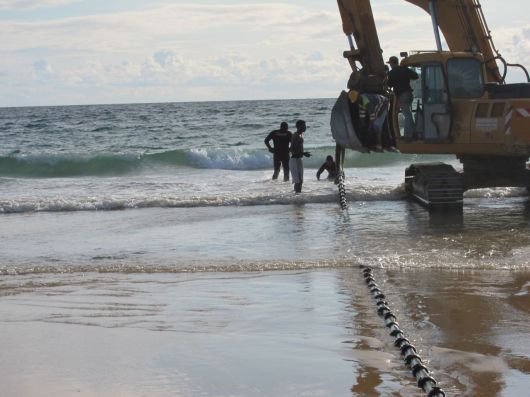
Comments (19)
Pingback: Colin Firth Aura Reading, Concluded. Guest Post by Ben – Rose Rosetree
Pingback: Colin Firth Aura Reading, Concluded. Guest Post by BRIANNE – Deeper Perception Made Practical
Pingback: Internet Cables | Inspirational Geek
Pingback: How Does The Internet Works? | chepreneur
Pingback: Discover the 'Real Places' of the Internet on May 2nd - Yurbanism
Pingback: Honest to Blog | Laura La Rue Honest to Blog | Loves sausage dogs and chunky heels
Pingback: Top Ten Tuesday
Pingback: What Is The Internet, Really? « Inspirational Geek